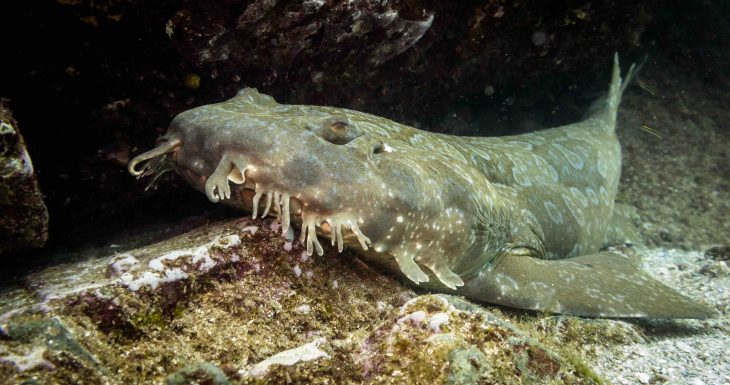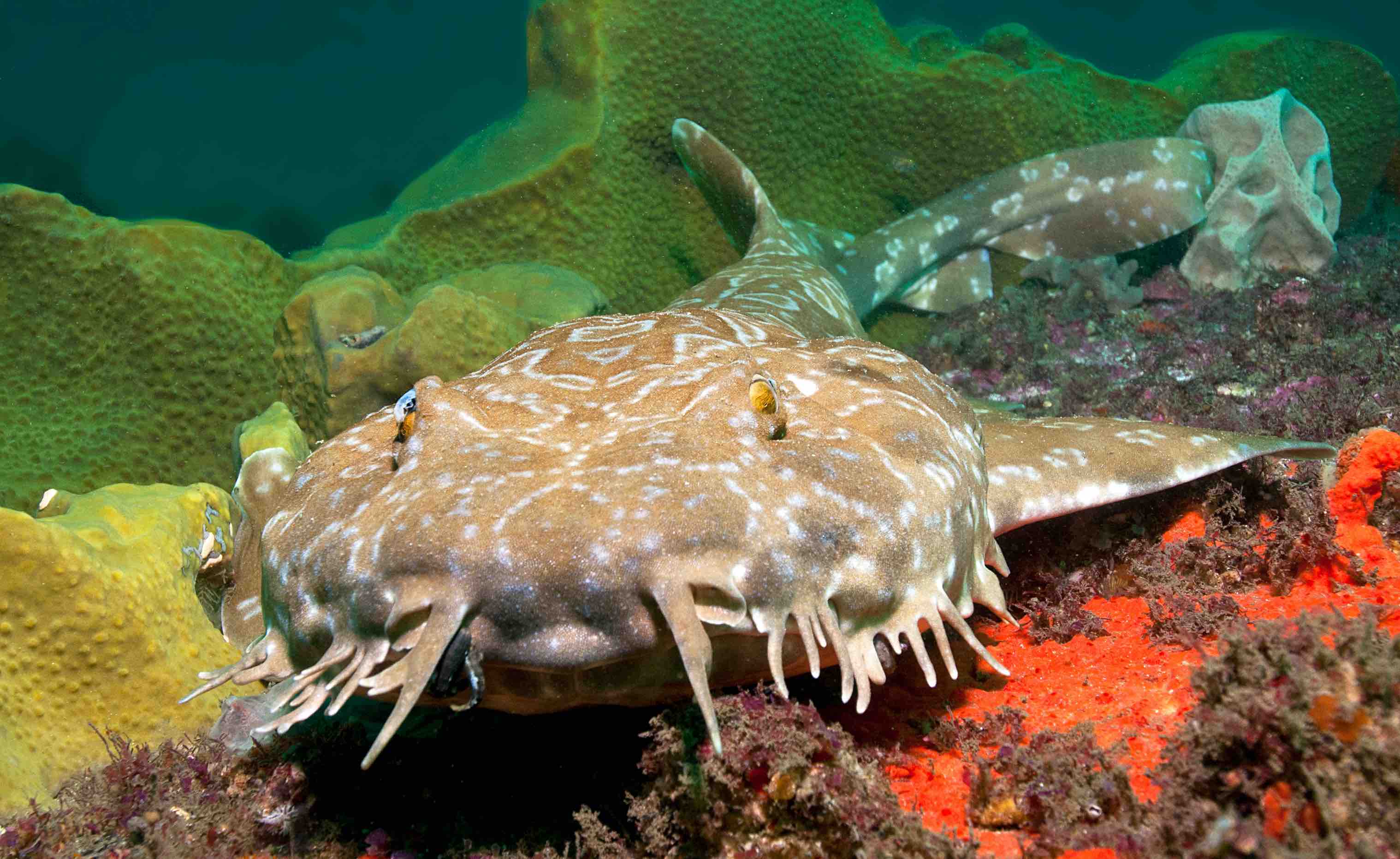
Wobbegong sharks, with their distinctive appearance and intriguing behavior, have captured the attention of marine enthusiasts around the world. In this article, we delve into 11 fascinating facts about wobbegong sharks, unveiling their unique characteristics, habitats, and feeding habits. Join us on a journey beneath the waves as we explore the captivating world of wobbegongs, infusing creativity and human-like storytelling to captivate readers. Let’s dive into the depths and discover the wonders of these mysterious creatures.
Camouflage Masters
Wobbegong sharks are masters of camouflage, blending seamlessly with their surroundings. Their intricate patterns and skin folds allow them to hide among coral reefs and sandy seabeds, making them difficult to spot.
Elaborate Mouths
Wobbegongs possess large, protruding mouths with multiple rows of sharp teeth. Their unique mouths aid in capturing prey, as they can quickly ambush unsuspecting fish and crustaceans that swim too close.
Bottom Dwellers
These sharks are primarily bottom-dwelling species, spending much of their time resting on the seafloor or among reef crevices. Their flattened bodies and intricate patterns help them blend in with the ocean floor.
Benthic Ambush Predators
Wobbegongs are benthic ambush predators, lying in wait for prey to come within striking distance. They use their powerful jaws to latch onto their victims, often swallowing them whole.
Species Diversity

The wobbegong family (Orectolobidae) consists of several species, including the tasseled wobbegong, spotted wobbegong, and ornate wobbegong. Each species has its own unique characteristics and distribution.
Impressive Size
Wobbegong sharks can reach impressive sizes, with some species growing up to 10 feet (3 meters) in length. Their large size, combined with their cryptic patterns, adds to their formidable presence.
Slow Movements
Wobbegongs are known for their slow and deliberate movements. Their sluggish swimming style allows them to conserve energy while remaining inconspicuous among their surroundings.
Nocturnal Feeding
These sharks are primarily nocturnal feeders, venturing out at night to hunt for prey. Their keen sense of smell and sensitive barbels (whisker-like sensory organs) help them locate food in low-light conditions.
Opportunistic Feeders
Wobbegongs are opportunistic feeders, consuming a variety of prey including fish, crustaceans, and cephalopods. They are known to ambush and consume larger prey than their size might suggest.
Reproductive Strategy
Female wobbegongs reproduce through a process called ovoviviparity. They retain fertilized eggs inside their bodies until they hatch, giving birth to live young. Wobbegong pups are self-sufficient from the moment of birth.
Threats and Conservation
Wobbegong sharks face various threats, including habitat destruction, overfishing, and incidental capture in fishing gear. Conservation efforts aim to protect their habitats and raise awareness about their importance in marine ecosystems.
Conclusion
Venture into the realm of wobbegong sharks and unlock the mysteries of these fascinating creatures. Their intricate camouflage, unique feeding habits, and bottom-dwelling nature make them an intriguing species to study and admire. From their elaborate mouths to their nocturnal feeding habits, wobbegongs offer a captivating glimpse into the underwater world. Let’s celebrate the wonders of wobbegong sharks and work together to ensure their conservation for future generations.
Frequently Asked Questions (FAQs)
Are wobbegong sharks dangerous to humans?
Wobbegong sharks are generally not aggressive toward humans unless provoked or threatened. However, it is important to maintain caution and respect their space when encountering them in their natural habitats.
Can wobbegong sharks be kept as pets?
Wobbegong sharks are not suitable for home aquariums due to their large size and specific habitat requirements. It is important to prioritize their well-being in their natural environment.
How long do wobbegong sharks live?
Wobbegong sharks have a relatively long lifespan, with some individuals living up to 25 years or more in the wild. However, precise lifespan estimates may vary by species and environmental factors.
What is the difference between a wobbegong shark and other shark species?
Wobbegongs have unique physical features, such as their ornate patterns, flattened bodies, and elaborate mouths, that distinguish them from other shark species. They also have distinct feeding behaviors and habitat preferences.
How can I contribute to wobbegong shark conservation?
You can support wobbegong shark conservation efforts by promoting sustainable fishing practices, reducing marine pollution, and supporting organizations that work towards marine ecosystem protection. Additionally, raising awareness about the importance of these fascinating creatures can make a significant impact.
Was this page helpful?
Our commitment to delivering trustworthy and engaging content is at the heart of what we do. Each fact on our site is contributed by real users like you, bringing a wealth of diverse insights and information. To ensure the highest standards of accuracy and reliability, our dedicated editors meticulously review each submission. This process guarantees that the facts we share are not only fascinating but also credible. Trust in our commitment to quality and authenticity as you explore and learn with us.
